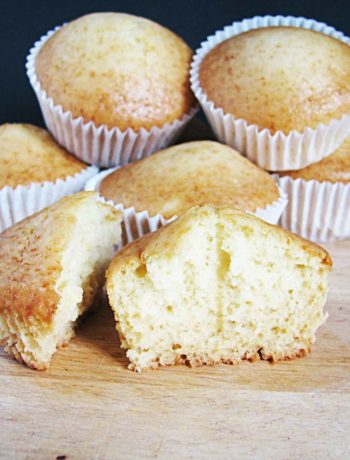Basque Cheesecake (or San Sebastian Cheesecake) originates from the Basque region of Spain. Its creation is attributed to the “La Viña” restaurant in San Sebastián. Unlike traditional cheesecakes, Basque cheesecake is known for its unusual caramel flavor and texture. The San Sebastian cheesecake recipe is also very easy to prepare, almost as simple as a cottage cheese casserole.
How San Sebastian cheesecake differs from regular cheesecake:
- Baked Crust: The top of the Basque cheesecake has a dark, almost burnt crust that gives it an unusual taste and appearance.
- Exceptionally Creamy Texture: The interior of the cheesecake remains very soft and creamy, like soft ice cream.
- No Crust Base: Unlike classic cheesecake, Basque cheesecake does not have a crust made of dough or cookies.
Regarding the ingredients for San Sebastian Cheesecake, there is nothing extraordinary about them. Cream cheese like Philadelphia, sugar, vanilla (in the form of extract, sugar, or seeds from a pod), eggs, cream, and a little flour or cornstarch. I prefer cornstarch, as it makes the cheesecake even more tender.

Preparation also does not require any extraordinary skills. Since Basque cheesecake is made without a crust base, the entire preparation process consists of just three steps: mixing the ingredients, baking, and cooling. Done! Really, anyone can handle this recipe, which is partly why it has become so popular worldwide.
Basque cheesecake does not require any additional decorations or fillings, as its taste and texture are quite sophisticated and rich on their own. However, if desired, you can add something like salted caramel, a fruit sauce, or fresh berries.
The given ingredients are calculated for an 18 cm (7 inch) baking pan. To make a cheesecake of a different size, adjust the amount of ingredients proportionally.
San Sebastiаn cheesecake ingredients:
- sugar
- cornstarch
- cream cheese
- vanilla extract
- eggs
- cream with 33-35% fat content
Preparation:
- Preheat the oven to 220°C (430°F).
- Mix the sugar with the cornstarch, whisking together.
- Add the cream cheese and vanilla extract (or sugar, or seeds) and mix everything together until smooth using a stand mixer or a hand mixer. At this stage, we need to turn the cream cheese into a smooth, creamy mass.
- Add the eggs and mix until homogeneous. Do not overbeat the cheese mixture.
- Add the cream and mix again until homogeneous, you can do this with a silicone spatula or a mixer on the lowest speed to avoid incorporating too much air into the mixture.
- Pour the cheese mixture into a baking pan lined with parchment paper and bake at 220°C (430°F) for approximately 40 minutes. Use your oven as a guide, as they can vary, so your baking time may differ slightly.
- Turn off the oven and open its door. Leave the cheesecake in the oven for 10 minutes. Remove it from the oven, cool it to room temperature, and then refrigerate it for 6-8 hours or overnight. Done!
If you try this recipe, I’d love to hear how it turned out! Share your experience or any creative twists you made in the comments below. Let me know if you have any questions. Your feedback helps me create even more delicious content. Enjoy your homemade treat and happy baking!

San Sebastiаn cheesecake | YellowMixer.com
Print RecipeIngredients
- 160 g (3/4 cup) of sugar
- 25 g (3 tbsp) of cornstarch
- 600 g (21 oz) of cream cheese
- 1 tsp of vanilla extract
- 3 eggs
- 200 g (3/4 cup) of cream with 33-35% fat content
Instructions
Preheat the oven to 220ºC (430°F).
Mix the sugar with the cornstarch, whisking together.
Add the cream cheese and vanilla extract (or sugar, or seeds) and mix everything together until smooth using a stand mixer or a hand mixer. At this stage, we need to turn the cream cheese into a smooth, creamy mass.
Add the eggs and mix until homogeneous. Do not overbeat the cheese mixture.
Add the cream and mix again until homogeneous, you can do this with a silicone spatula or a mixer on the lowest speed to avoid incorporating too much air into the mixture.
Pour the cheese mixture into a baking pan lined with parchment paper and bake at 220ºC (430°F) for approximately 40 minutes. Use your oven as a guide, as they can vary, so your baking time may differ slightly.
Turn off the oven and open its door. Leave the cheesecake in the oven for 10 minutes. Remove it from the oven, cool it to room temperature, and then refrigerate it for 6-8 hours or overnight.






Be the first to comment